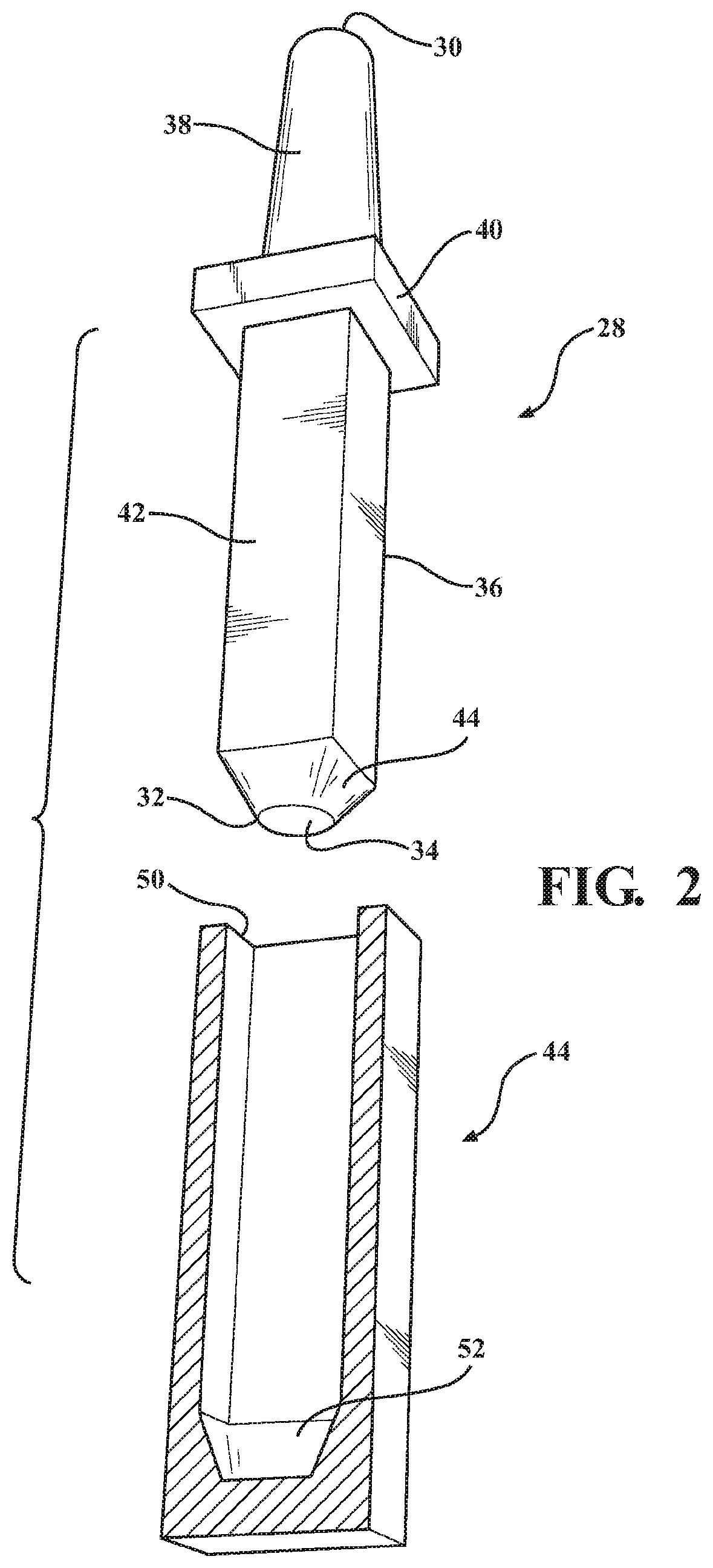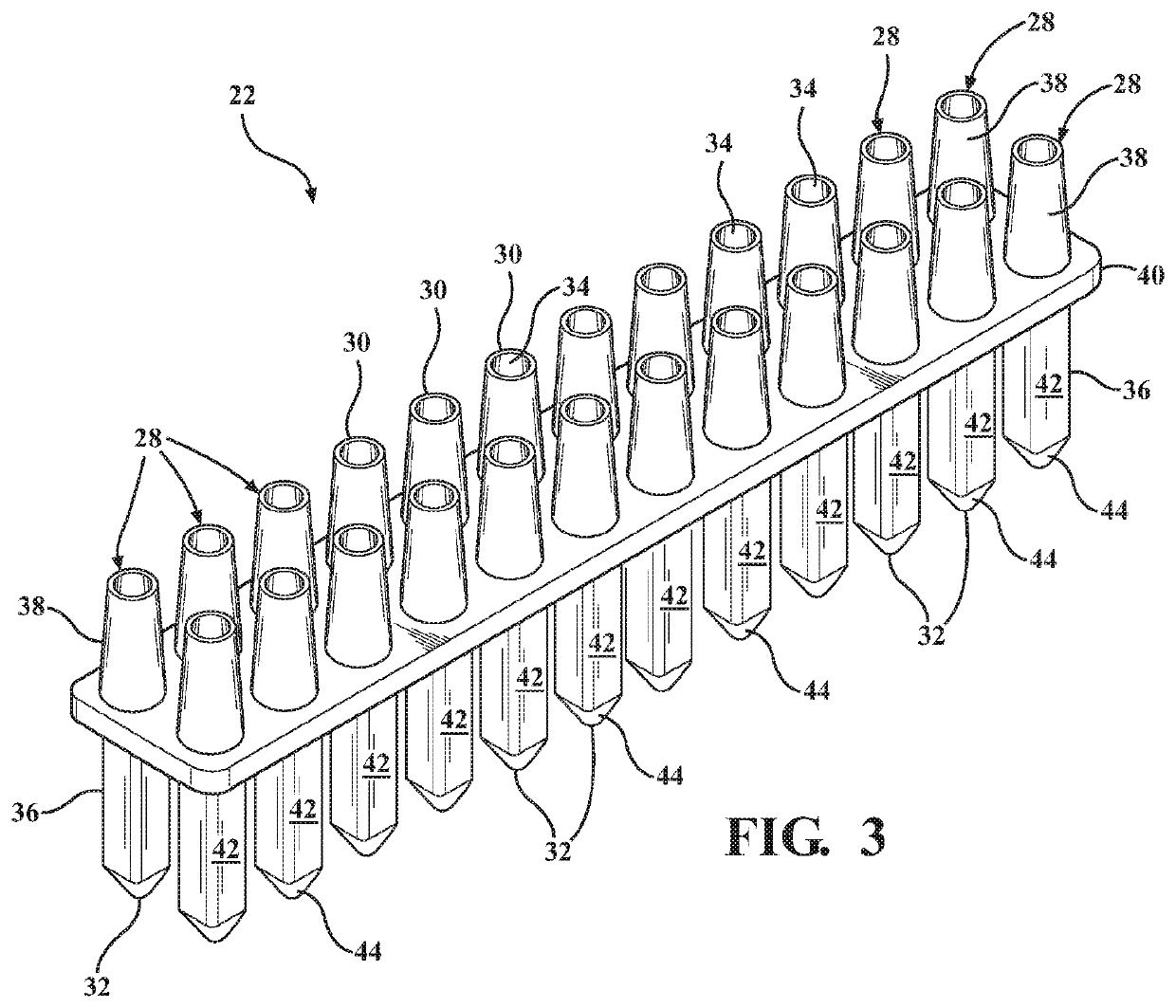Optofluidic diagnostics system
a technology of optical properties and diagnostics, applied in the field of measuring or testing systems and processes, can solve the problems of large sample and reagent requirements, large sample and reagent volumes, and inability to deploy at point-of-care testing and other field applications, and achieve the effect of improving detection performance and amplifying optical properties
- Summary
- Abstract
- Description
- Claims
- Application Information
AI Technical Summary
Benefits of technology
Problems solved by technology
Method used
Image
Examples
Embodiment Construction
[0029]Referring to the figures, wherein like numerals indicate like or corresponding parts throughout the several views, an optofluidic diagnostic system according to one exemplary embodiment of the invention is generally shown at 20 in FIG. 1. The automated optofluidic diagnostic system 20 is designed for rapid biological and chemical analysis. Its many advantages include using less analyte and reagent solutions than the amount used in traditional protocol. Furthermore, the system 20 is able to perform high-throughput detections because of its capability to automatically load and unload the solutions.
[0030]Generally stated, the optofluidic diagnostic system 20 is composed of three primary parts or modules: a sensor array 22, a test plate 24 and an optical detection cartridge 26. Each module is independent of the other two modules, in the sense that each module is capable of stand-alone use independent of the unique attributes found in the other modules. However, all three of these ...
PUM
 Login to View More
Login to View More Abstract
Description
Claims
Application Information
 Login to View More
Login to View More - R&D
- Intellectual Property
- Life Sciences
- Materials
- Tech Scout
- Unparalleled Data Quality
- Higher Quality Content
- 60% Fewer Hallucinations
Browse by: Latest US Patents, China's latest patents, Technical Efficacy Thesaurus, Application Domain, Technology Topic, Popular Technical Reports.
© 2025 PatSnap. All rights reserved.Legal|Privacy policy|Modern Slavery Act Transparency Statement|Sitemap|About US| Contact US: help@patsnap.com



